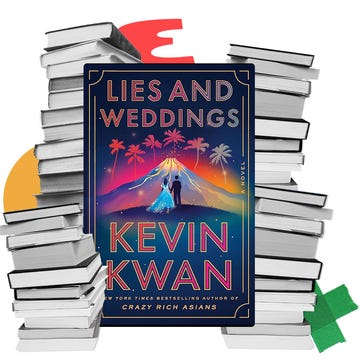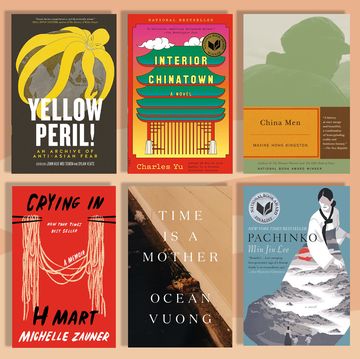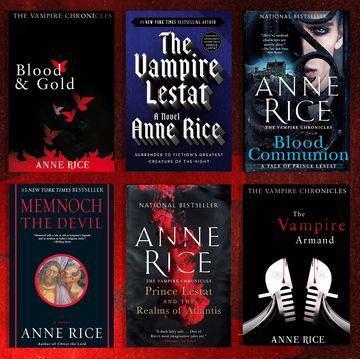"I thought I crushed a butterfly the other day," Nana Kwame Adjei-Brenyah says, sounding genuinely rueful. “I felt so bad.” Today at least, the lepidoptera we have come to see at the Museum of Natural History are safe from harm: It turns out that tickets to their famed vivarium are sold out, so instead we watch through Plexiglas as their little gemstone bodies flicker and weave for a lucky scrum of schoolchildren and elaborately scarved Europeans.
Even in the wilting heat of a late-stage New York summer, Adjei-Brenyah cuts a striking figure; a security guard pulls away from corralling unruly tweens just to compliment his hat, a trilby in rich forest green. The guard probably has no reason to know that this elegant, soft-spoken man who quite literally would not hurt a fly is the same one who’s published two of the most explosive and unlikely literary sensations of the past five years—the astonishing 2018 story collection Friday Black and his debut novel, Chain-Gang All-Stars, released in May and now short-listed for the National Book Award for Fiction. Both are brutal, maximalist, and often gorgeously profane missiles of dystopian satire: Joseph Heller meets Jordan Peele somewhere beyond Thunderdome. The Guardian called Chain-Gang “an exuberant circus of a novel,” while The New York Times sang that its fight scenes unfold “as if Joe Rogan had fallen into a trance and assumed the diction and rhythms of Toni Morrison.” Jenna Bush Hager, scion of two American presidents, improbably chose the book—a ferocious polemic against the U. S. prison-industrial complex, centered on two queer Black women in love—for her Today-show club, Read with Jenna. Which is to say that Adjei-Brenyah has become, by most metrics, a wildly successful writer in a relatively brief amount of time. He got his first book deal on his twenty-sixth birthday, just over six years ago. With a burgeoning body of work that is both painfully topical and thrillingly cinematic, he sits at the vanguard of a new kind of novelist: the writer as not just an artist and an entertainer but a true humanist capable of attracting vast, untapped readerships. The result is equal parts exhilarating and profound—a social-justice pill slipped into the chunky peanut butter of mass appeal.
And while his work has met with fervent praise from some of the most vaunted names in the modern canon (George Saunders, Colson Whitehead, Dana Spiotta), several of whom he considers friends and mentors, his origin story hardly hews to the standard greased-wheel narratives of lit-world access and privilege. Born between two sisters to Ghanaian immigrants in Queens—his mother worked as a teacher; his father was a criminal defense attorney—young Nana moved farther north in elementary school to Spring Valley, an unusually diverse town in Rockland County composed mostly of first- and second-generation immigrants. “In my high school graduating class of three-hundred-something,” he estimates, “we probably had ten white kids, if that.”
Though the Adjei-Brenyahs didn’t have much money, reading was fundamental: “I was a library kid. My parents would drop us off when it opened and pick us up when it closed. I would get my dad’s yellow legal pads and just write little fantasy stuff down, and me and my friends would come up with stories that we would upkeep orally. But I think I got more and more into writing as an escape for when things got bad or weird or hard at home.”
Financial instability and mental-health issues within the family led him to take on numerous retail jobs as a teenager, an experience that would eventually form some of Friday Black’s signature pieces. “I worked in the Palisades Mall at Steve & Barry’s,” he explains, “which was the spot that had Stephon Marbury basketball sneakers for eight dollars and—who’s the lady from Sex and the City?—Sarah Jessica Parker jeans for ten dollars, so because of that we would have these really intense Black Fridays.” In the book’s indelible title story (first published in Esquire’s pages), that materialism manifests as almost comically deranged violence. Zombified shoppers rattle at the store gates; limbs are torn from their barely verbal owners and small children are crushed in the rush to reach a discount flat screen or a winter fleece. (Stoic employees, accustomed to the grind, sweep up the bodies with a push broom.)
Whatever he might have been filing away for future fiction glory, Adjei-Brenyah admits, “there was a time when I thought I was going to be stuck in the mall forever, because my dad had gone back to Ghana for a while and somewhat disappeared.” Increasingly, keeping the lights on at home was a struggle, and he often felt like an underachiever next to his sisters, the elder of whom had already earned a partial scholarship to Columbia. But after high school, he enrolled in SUNY Albany (still steadily moonlighting in retail) and soon, through cold calls and sheer tenacity, found several influential mentors on campus, including Lynne Tillman and Lydia Davis.
Tillman’s guidance in particular was a revelation. “I told her I wanted to be a writer, which is a ridiculous thing to choose,” he recalls. “She asked me what I had read, and I was like, ‘J. K. Rowling!’—you know, fantasy and sci-fi and genre things, nothing anyone in academia would consider quote- unquote literary. But she pulled out Henry James, ‘Bartleby, the Scrivener,’ Grace Paley, and said, ‘Come back when you’ve read and annotated them and we’ll talk.’ So I came back the next week and I had done them all. I felt really cool.” He breaks out into laughter. “I found out years later that she meant for me to come back at the end of the semester.”
This article appeared in the 90th Anniversary issue of Esquire
subscribe
Steadily, his own personal style came into focus—the seeds of several Friday stories first bloomed in Albany—and so did the idea of grad school, previously an impossible-seeming dream. Tillman had introduced him to the work of Booker Prize winner George Saunders, whose heady flights of postmodernism Adjei-Brenyah at first found impenetrably strange and then fell in love with. “I discovered what an MFA was like two months before I applied because I liked his stories so much,” he remembers. “Once I found out that he taught at Syracuse, I was like, ‘Oh, I want to do that.’ I applied to a couple places and Syracuse was free, so that was the price I could afford.”
Ask Saunders about his former student and he will give you a soliloquy. “Nana was, yes, my student at Syracuse, and we worked closely together on several of the stories in Friday Black,” he wrote to Esquire in a lengthy and whimsically punctuated note. “Off the page, he’s just such a lovely person, generous and funny and charismatic. . . . He has a way of taking on big, difficult human problems very naturally in his fiction, the kinds of things we all worry about or should, and making them energetic and fun. In other words he really believes innately, at a cellular level, in the power of fiction. It’s essential to him, to how he lives his life. I also find it really wonderful that he’s been able to take certain hard things he’s gone through and purify those things into compassion for other people and the hard things they’re going through. . . . In both of his books, it feels as if the author is right there with you. You can feel a warm, alert, three-dimensional person on the other side of the page—not just ‘a writer, writing’ but ‘a person, caring/feeling.’ ”
To be a person caring/feeling in the world, Adjei-Brenyah fervently believes, is to acknowledge the intrinsic value of every human being and how unevenly even the most basic rights to life and liberty can be applied. “I was the generation that got activated by Trayvon Martin,” he says matter-of-factly, squinting against the late-afternoon light of the museum’s gardens. “And it’s kind of hard to think of him outside the context of the larger carceral state. Then once you start thinking about policing, you get to the actual prisons. Working on [Chain-Gang] radicalized me further, because I got informed, and as you get more informed, it gets really hard to feel like it’s ethical to have a system like that in a place that’s supposed to be in any way humanistic. Cash bail, solitary confinement—there are a million types of ways to murder someone, and the carceral state is doing many of them all at once, all the time.”
The novel—in which convicted prisoners in a near-future dystopia can “earn” their freedom via a traveling gladiator circuit whose televised battles become exercises in both state-sanctioned brutality and cheery corporate branding—is threaded with lacerating condemnations of a broken system. “Sometimes to make us see how insane the world is, we might have to tell a story with strange parameters,” Saunders suggests. “But the purpose of that is to really make us see what’s happening in so-called quotidian reality—to break us free of our normal ways of seeing and sometimes excusing things that if we saw them clearly would revolt us. I think this is Nana’s project in Chain-Gang All Stars: to make us really think about what we have come to call ‘incarceration’ and help us see what that thing really is, and what it does to people.”
If those ambitions sound polemical and vaguely preachy, the execution is somehow neither: The book throbs with a soulful, anarchic intimacy, girded by vivid backstories that burrow beneath the hard-drawn fault lines of race and class and whatever constitutes a “criminal” mind. It’s also full of great characters, with names so chewy they have an almost visceral mouthfeel: Hurricane Staxxx, Melancholia Bishop, Ice Ice the Elephant. Adjei-Brenyah’s own moniker, he says, met with less friction from publishers than it might have in another, pre-Obama era. “I think by the time I was coming up, it was like, ‘Cool, be Nana Kwame. Maybe he’s American, maybe he’s not! Double points!’ ” he says with a wry smile. “But I’m sure ten years before, I would’ve been N. K. Adjei.”
Hearing each syllable sounded out carefully by various journalists and talking heads has been one strange by-product of a fame he’s still very much learning to metabolize. “The year my first book came out was the hardest year of my life, because my dad died of cancer several months after,” he says. “I got lucky—I kind of caught the carrot on the stick, so to speak, in some people’s minds. I had worked really hard to make this thing happen in an unlikely timeline, in an unlikely kind of way, in what felt like an almost impossible environment. And then it started happening, and it didn’t make me happy.”
He pauses, then goes on: “I’m super grateful, obviously, for everything—I mean, before this I’d been on a plane twice in my adult life. And I’ve made great friends who are writers. But the desire for an external anything to make you happy is going to lead to an emptiness. . . . I’ve been saying this to students a lot in workshops, and I really pray I’m not lying when I say that the glory that’s to be had in writing is in just doing it. You have to be right there, fully in the sentence. And that is a beautiful place. It’s hard when life is life-ing, you know? But I try my best to be there.”
After months on the road to promote Chain-Gang, Adjei-Brenyah is mostly back to life-ing: resettled at home in the Bronx, working on a new story collection, and thinking about how he’d like to see his projects in other mediums. (All twelve pieces in Friday Black were optioned for the screen.) His dream director would be Atlanta’s Hiro Murai, he confesses, though he also pictures Jordan Peele or Gina Prince-Bythewood (The Woman King). The strikes in Hollywood have stalled all that, for now anyway. As Adjei-Brenyah adjusts his hat and prepares to head off to yet another reading, a few ordinary butterflies—pretty, but not museum quality—flutter nearby, small interlopers in the verdant, rarefied airspace of the Upper West Side. They’ll likely never see the inside of a vivarium; they look unbothered and free.



















